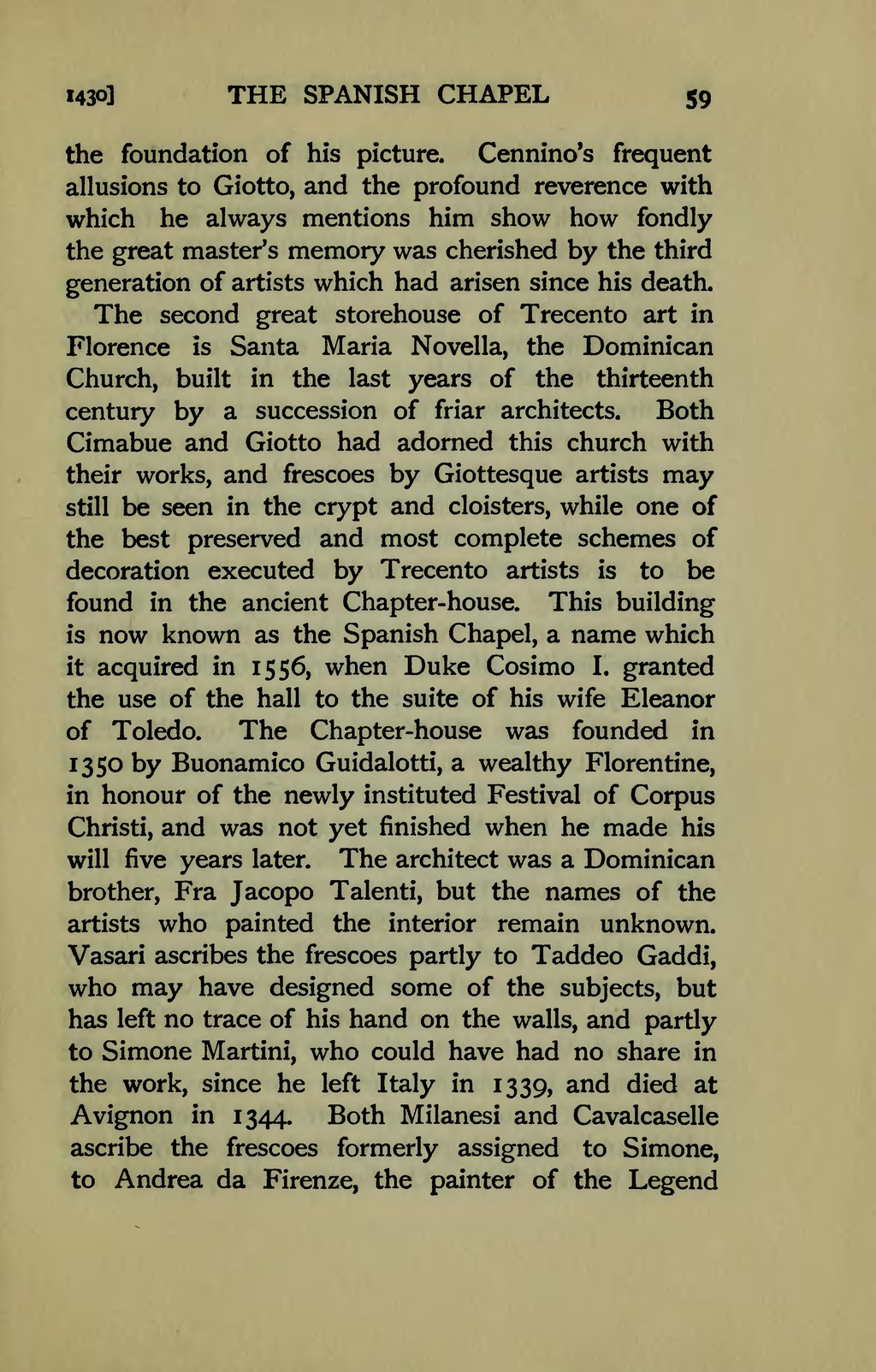the foundation of his picture. Cennino's frequent allusions to Giotto, and the profound reverence with which he always mentions him show how fondly the great master's memory was cherished by the third generation of artists which had arisen since his death.
The second great storehouse of Trecento art in Florence is Santa Maria Novella, the Dominican Church, built in the last years of the thirteenth century by a succession of friar architects. Both Cimabue and Giotto had adorned this church with their works, and frescoes by Giottesque artists may still be seen in the crypt and cloisters, while one of the best preserved and most complete schemes of decoration executed by Trecento artists is to be found in the ancient Chapter-house. This building is now known as the Spanish Chapel, a name which it acquired in 1556, when Duke Cosimo I. granted the use of the hall to the suite of his wife Eleanor of Toledo. The Chapter-house was founded in 1350 by Buonamico Guidalotti, a wealthy Florentine, in honour of the newly instituted Festival of Corpus Christi, and was not yet finished when he made his will five years later. The architect was a Dominican brother, Fra Jacopo Talenti, but the names of the artists who painted the interior remain unknown. Vasari ascribes the frescoes partly to Taddeo Gaddi, who may have designed some of the subjects, but has left no trace of his hand on the walls, and partly to Simone Martini, who could have had no share in the work, since he left Italy in 1339, and died at Avignon in 1344. Both Milanesi and Cavalcaselle ascribe the frescoes formerly assigned to Simone, to Andrea da Firenze, the painter of the Legend
